Locks of Perigord, one by one ... (part one)
Aerial view of Castelnau Castle. It’s hard to think of a more picturesque place, is it? Around the green mountains, the river, beyond it the fields, a small village under red tiled roofs - very romantic, not to mention the fact that here everything around you breathes the Middle Ages.
Therefore, for example, purely unconsciously, the castle of Carcassonne in France is much more pleasant to me from the side where it towers above the city, on the opposite plain. Well, the castle of Montsegur, even if only miserable ruins remained from it, is just that, for it stands on a high cliff, as well as many other Cathar castles.
That's how it stood above the houses of local villagers almost a thousand years ago ...
Castelno Castle, a medieval fortress in the French commune of Castelnau-la-Chapelle in the Dordogne department (formerly called the province of Périgord), is precisely one of these “real” castles, as it is located on a high rock just above the small village located at its foot. It is believed that the first castle was built here in the XII century, but it was destroyed by the army of Simon de Montfort during the Albigensian crusade against the Cathars. It is known that he stormed, took Kostelno’s castle in 1214, and left a garrison there. Bernard de Kaznac - the owner of these places, the next year he returned the castle, and not all the soldiers of Montfort ordered to hang them.
In 1259, Castelnau passed under the authority of the Duke of Aquitaine, which was the English king Henry III. He estimated its location as very good, and apparently ordered to build a new castle here, which the builders did during the XIII century. However, in 1273, the castle still returned to its legitimate feudal rulers - the family of Castelnau, the subjects of the Count of Perigord, the loyal vassal of the King of France. And everything would be nice if the owners of the castle were not at this time in enmity with the barons of the family de Beynac, whose castle was within sight of Casteln.
This is what Beynak Castle looks like today from one of the bastions of the Castle of Castelnau.
The enmity of the two families led to the fact that the whole of Périgord divided into two warring parties. Both locks kept a sharp eye on each other, since they were so close that they didn’t even need a telescope. So much so that in the 1317 year, Pope John XXII himself intervened in their conflict, blessing the marriage between these families, hoping to at least put an end to this hostility.
The coat of arms of the owners of Castellno - "shield with a picture of the tower." Hence, by the way, and the name of the castle.
But no sooner had peace reigned in Perigord, as the Hundred Years War broke out in 1337. Both families took part in it, and it did not end well - all the heirs of the man in the Castelno family died. As a result, Mane de Castelnau - the only heiress of the family, in 1368, they had to marry Nompares de Comon and now the de Comon family became its owners. The King of England Henry IV made Nompara de Comon his seneschal, that is, the castle again passed to the British.
But in 1442, the castle was besieged by French royal troops. It took three weeks of siege for the garrison to surrender, after which the English captain gave the French the keys to the castle, for which he was given life and ... 400 ecu. That is, he is still profiting! Well, after the battle of Castiglione (1452), the British finally left France, including Aquitaine with Perigord.
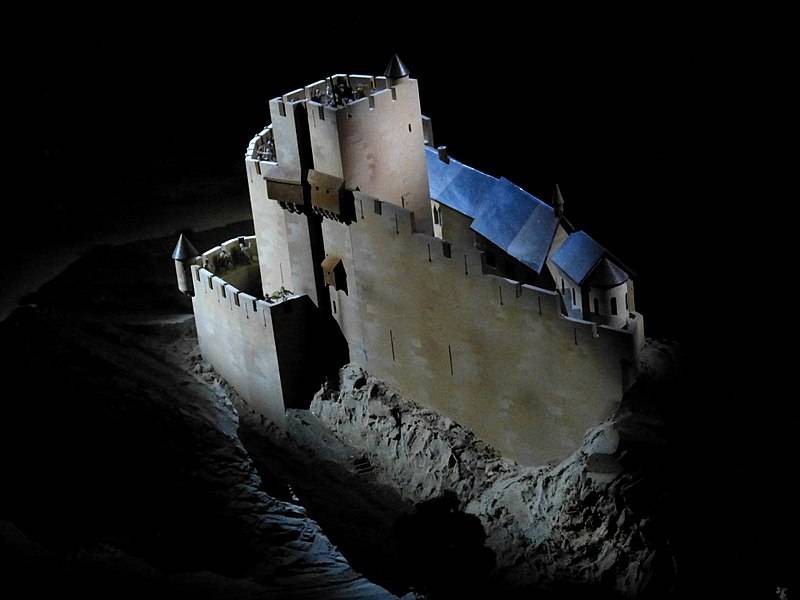
This is how the castle itself looked like in 1442. (Museum of the medieval wars of the castle of Castelnau)
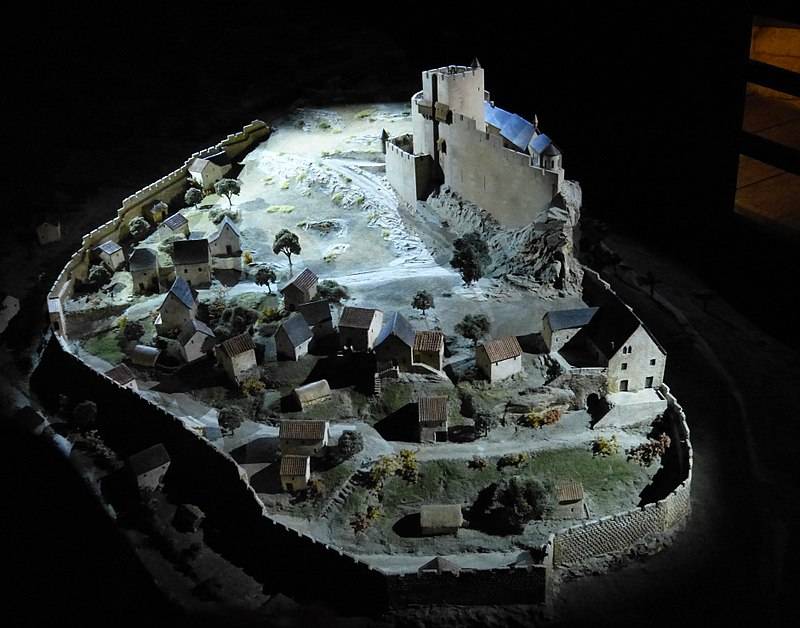
The castle and the surrounding settlement. (Museum of the medieval wars of the castle of Castelnau)
The castle gradually began to rebuild and strengthen. Its walls were reinforced, new towers were built and a round Barbican was added. The work, organized by Brandel de Comon, was continued by his son Francois, and then by his grandson Karl. So construction work in the castle did not subside during the life of three generations of Komonov! And Francois one castle seemed small, and he erected nearby another one - Miland in the Renaissance style.
It looks like this castle today. To the right is a round Barbican, right in front of it is a gate and a road, arranged so that people can walk along it to the castle, turning to it with its right side.
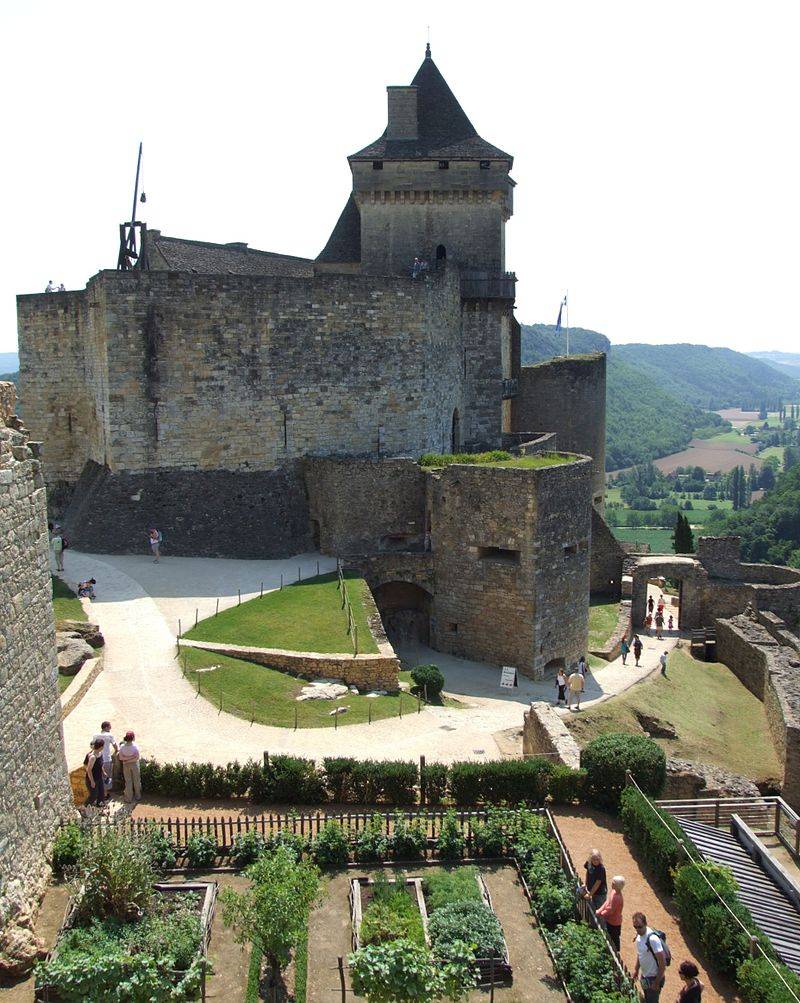
In every self-respecting medieval castle, its owners sought to set up a vegetable garden in order to have fresh vegetables on the table and not depend on the inhabitants of the settlements surrounding the castle, because they could be captured by enemies.
From some points the castle seems very large. But from the others it can be clearly seen that in fact it is very, very narrow.
Now Castellno finally lost all its military significance and became an ordinary country estate. And, nevertheless, in 1520, another tower was attached to it, well, apparently, its owners simply didn’t have enough imagination for anything else. But then a new page in the history of the castle was opened by Geoffroy de Vivan, grandson of Francois de Comon, who was born in Castelnau in 1543 and became a friend of the future King Henry IV. “Geoffroy is warlike” - namely, he received such a nickname for his unbridled temper, inspired fear in all of Perigord. In his family nest for all the time of the Huguenot wars (and he was also a Huguenot in addition), so no one disturbed him. However, the family of Geoffroy still preferred the more cozy and secluded Castle of Miland and its own family castle, De La Force, near Bergerac, than this well-fortified, but still rather gloomy, place in terms of amenities. As a result, the castle was abandoned, and in 1832, it began to be used at all as a quarry, since stones turned out of its walls were very convenient to roll along the slope directly to the river.
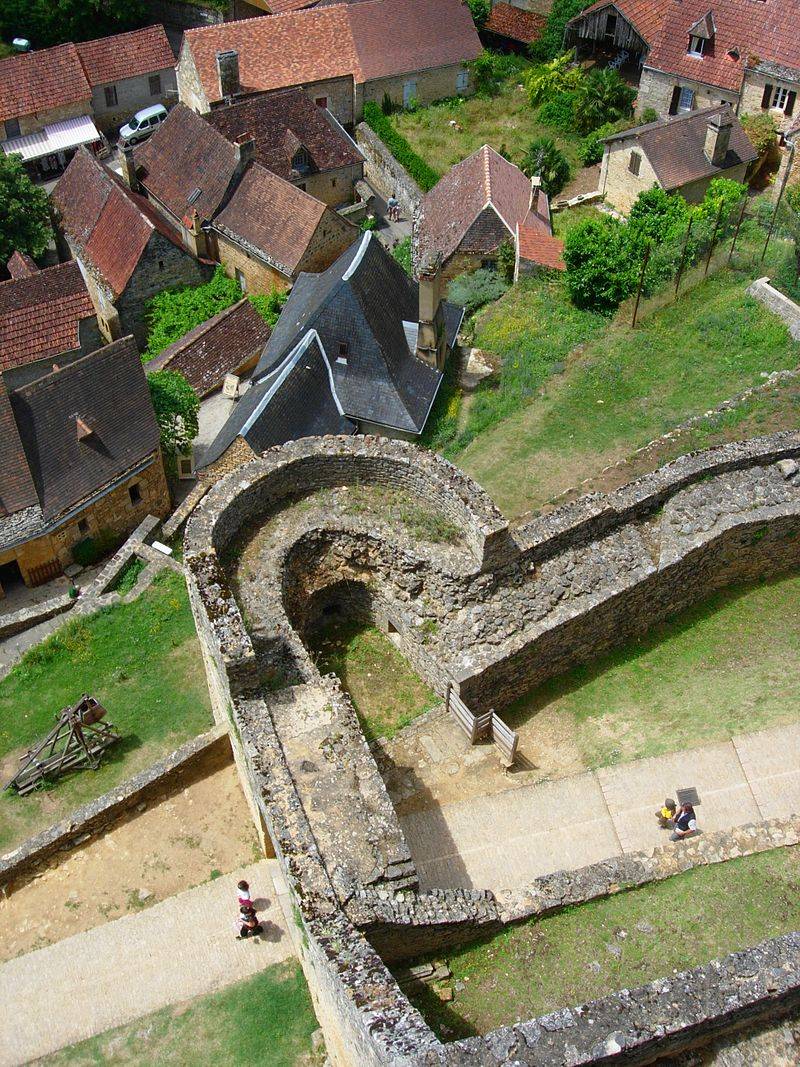
View of the road to the castle from one of its bastions.
View from the castle to the village below.
Only in 1966, the castle of Castellno received the status of a historical monument “Monument Historique” and twice, from 1974 year to 1980 and from 1996 to 1998, was restored, and finally it was finished only in 2012, with a lot of it It was restored almost anew.
Bastion with mockups of trebushu and cores to them.
In 1985, the museum opened a museum of medieval wars, the exposition of which was located in the residential chambers of its owners. The collection of the museum includes 250 genuine XIII — XVII century objects, including armor and weapon, and also presents the reconstruction of siege weapons.
Hall of artillery: bombard of the XV century.
Ribadekin - a multi-barreled gun of the XV century.
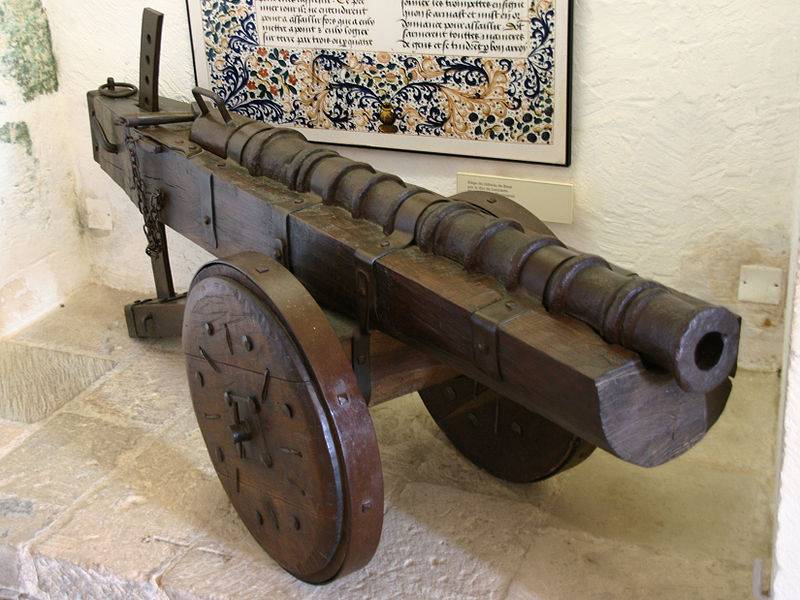
Vogler - field gun of the XV century.
The halls are divided into an artillery hall, a fencing hall, a model hall, and a video hall. There is also an open gallery where life-size trebushu mockups are on display, there is an armory, casemates, armor workshop, a medieval kitchen, as well as an upper dungeon room with furnishings restored in it.
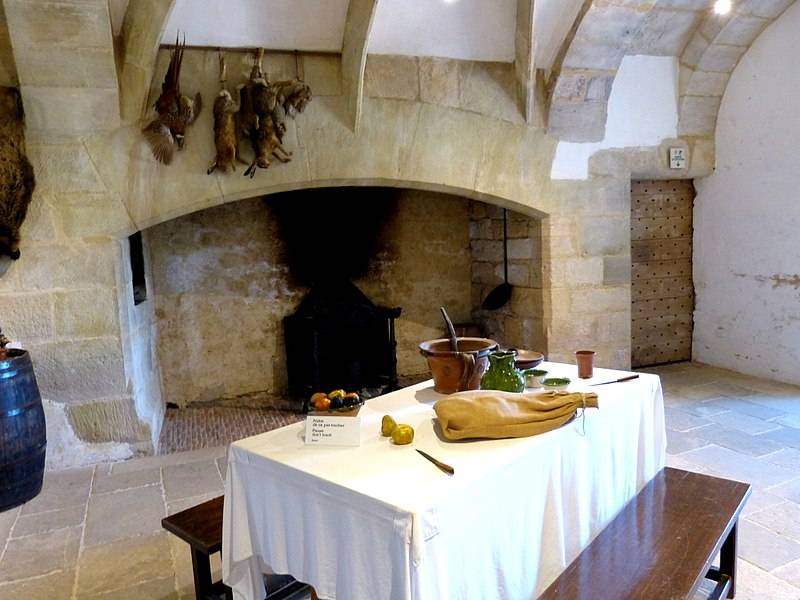
Medieval cuisine.
And this is her ceiling - well, absolutely pure gothic.
Weapons and armor in the museum of the castle exhibited relatively few, but all the samples are quite interesting. For example, the exhibition features a variety of crossbows, halberds, swords and daggers, including, for example, Bullock.
The museum features an impressive collection of halberds and interesting knightly armor, including tournament toad head helmets. But the most interesting exhibit of this hall is the L-shaped wooden counter with bag. Such a device was used to train the knights. Having struck him with a spear, he had to jump as fast as possible under him, otherwise the stand fixed on the axle, turning, hit him with a bag on the back.
Breastplates of the XVI century.
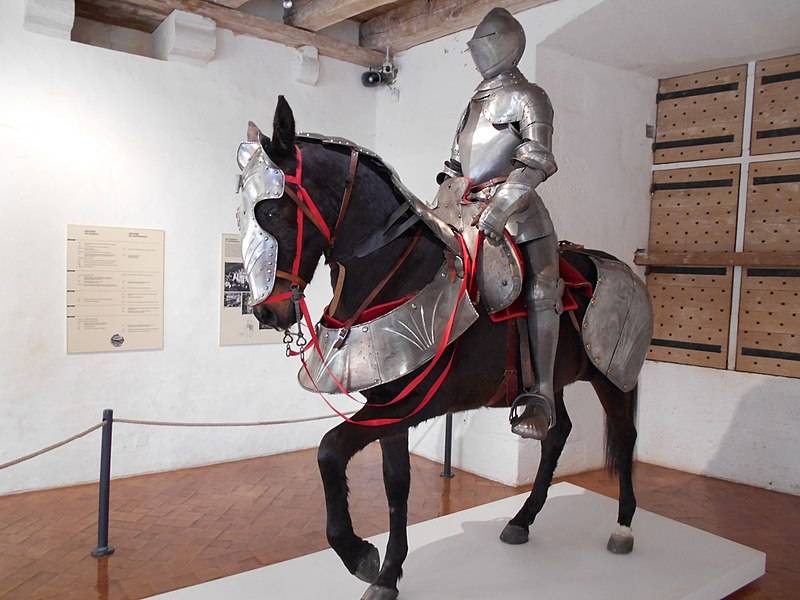
There is a knight-rider in the museum and even a horse covered with wool under it.
If outside on the bastion there are life-size demambouche, then in the castle several layouts are represented of this “gravitational” artillery.
If you wish, you can dress here in clothes and armor, shoot from the “real” medieval bow in the shooting range, and even fight on swords!
The guide reports that more than 220 000 tourists visit the castle every year, and among them 20 000 schoolchildren, and this is not surprising. There is something to look at.
To be continued ...
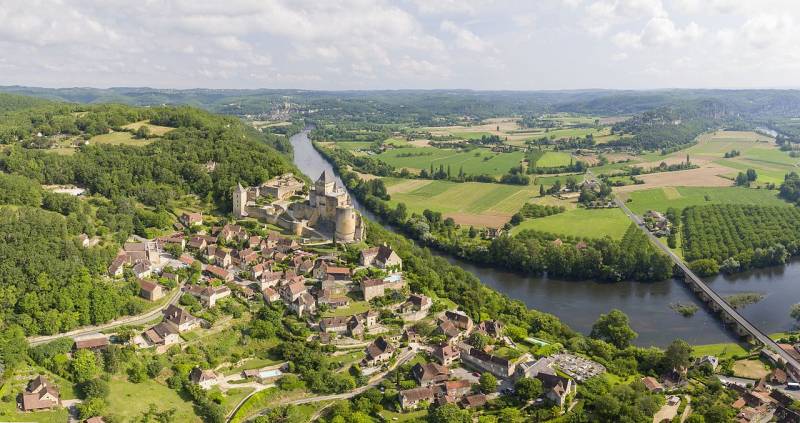
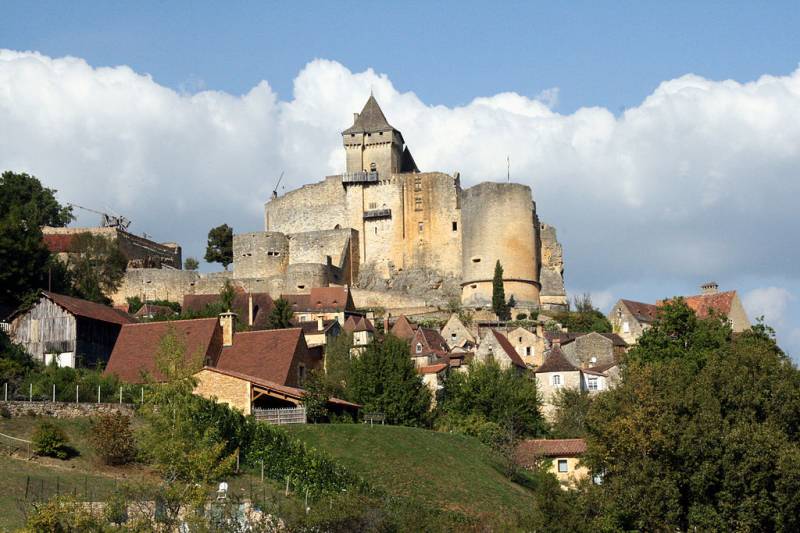
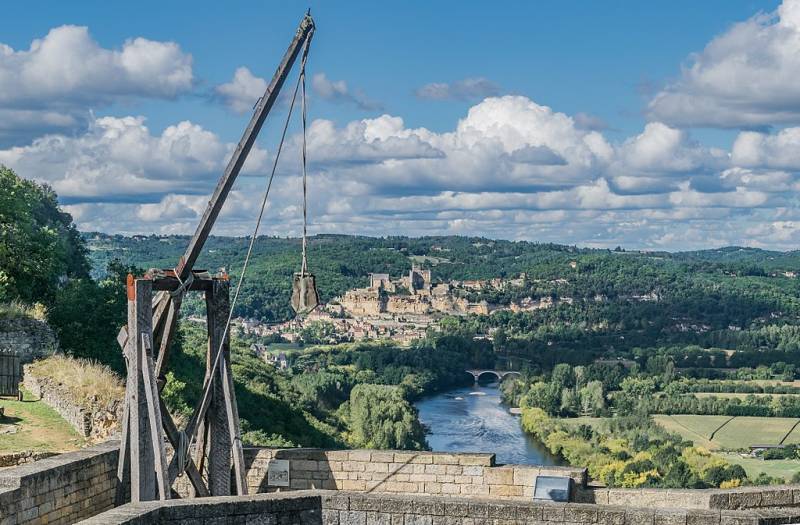
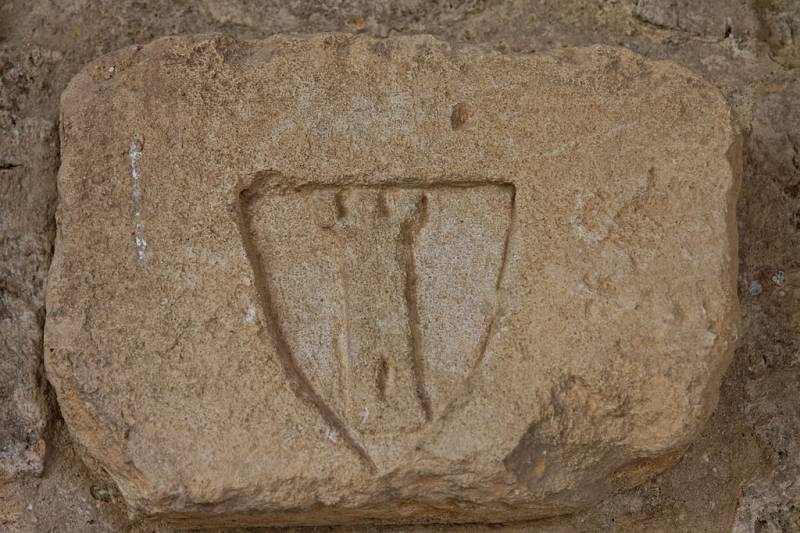
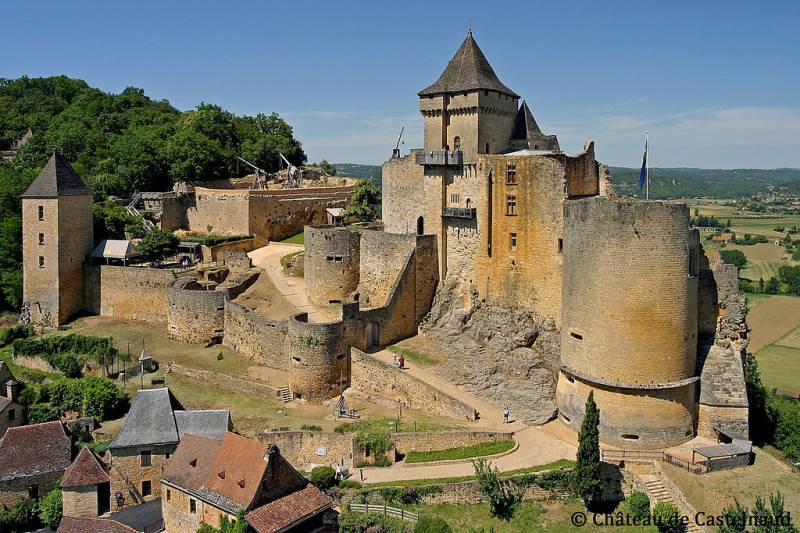
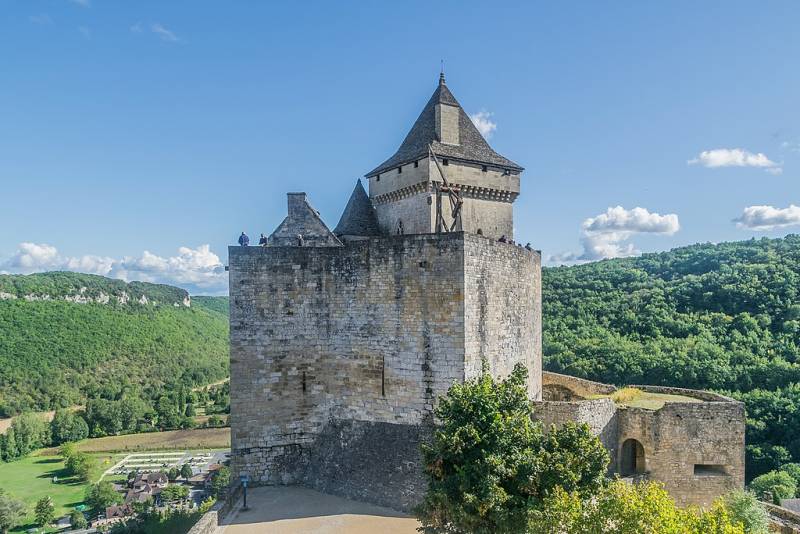
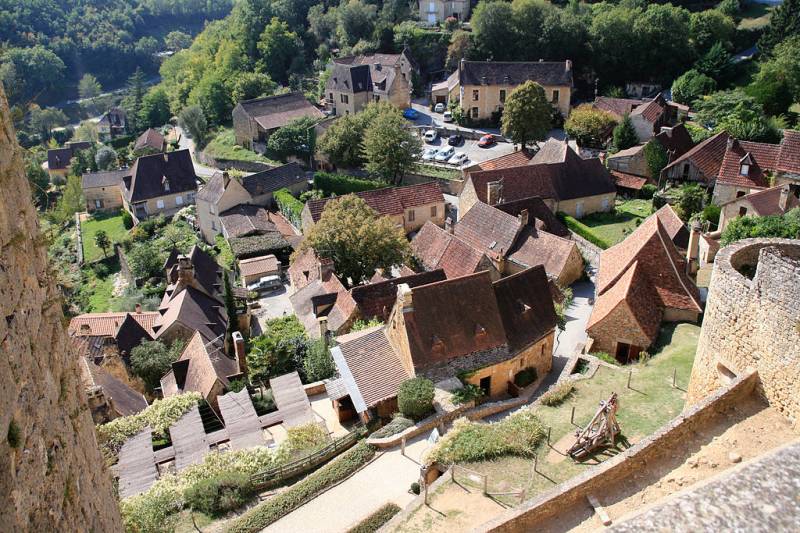

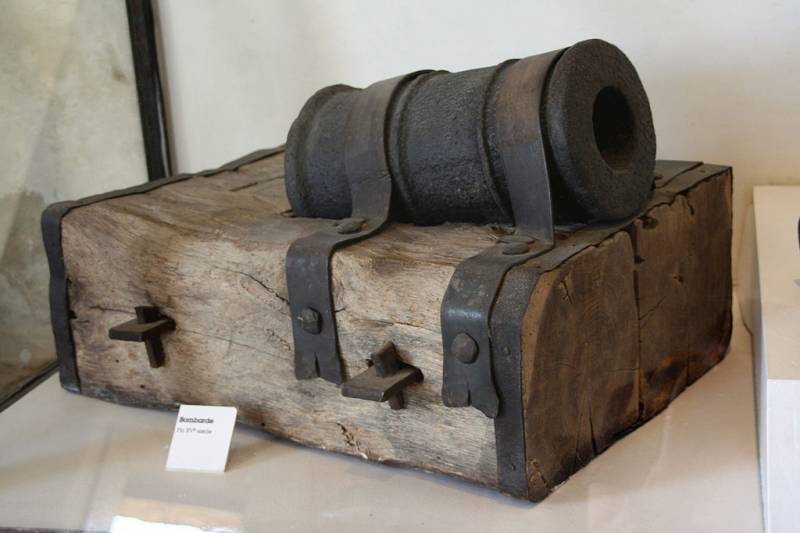
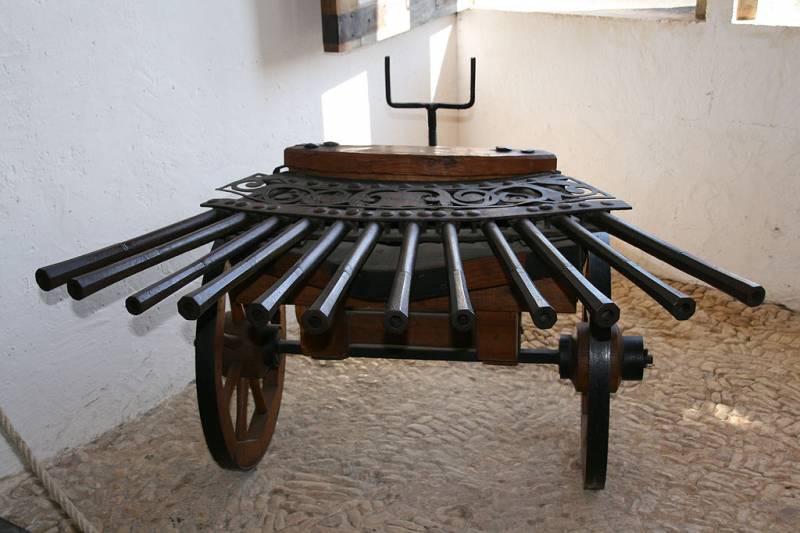
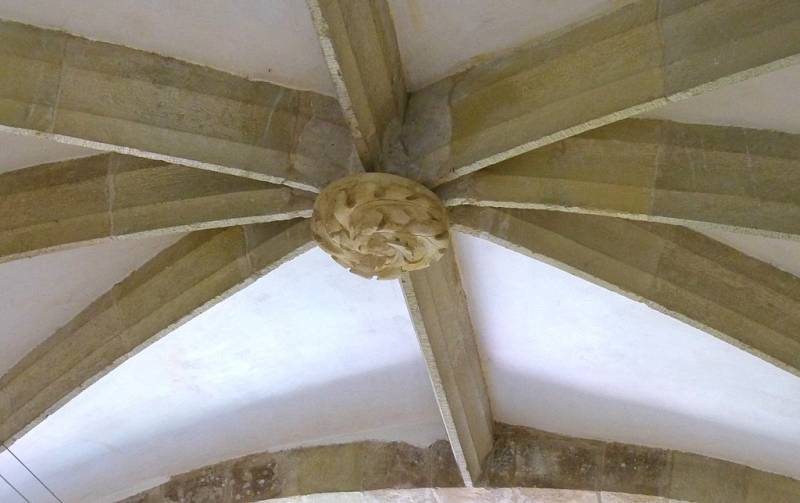
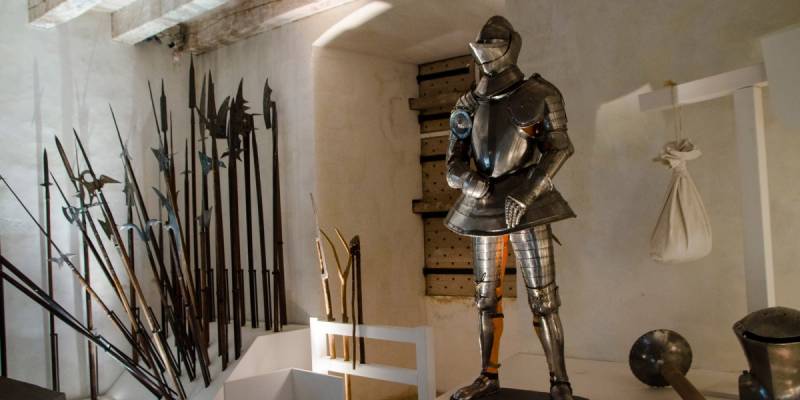
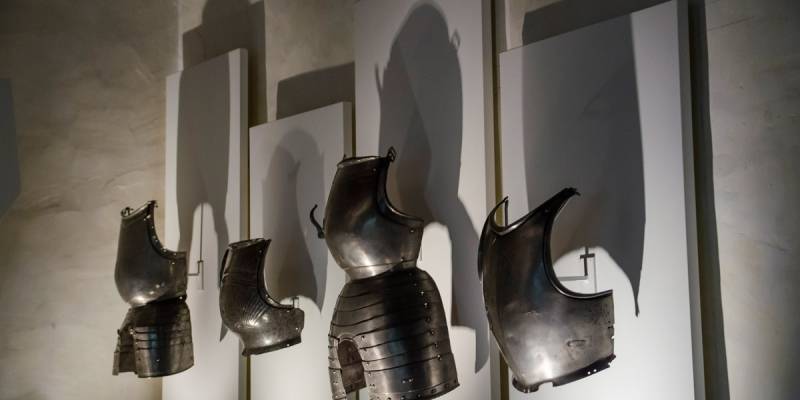
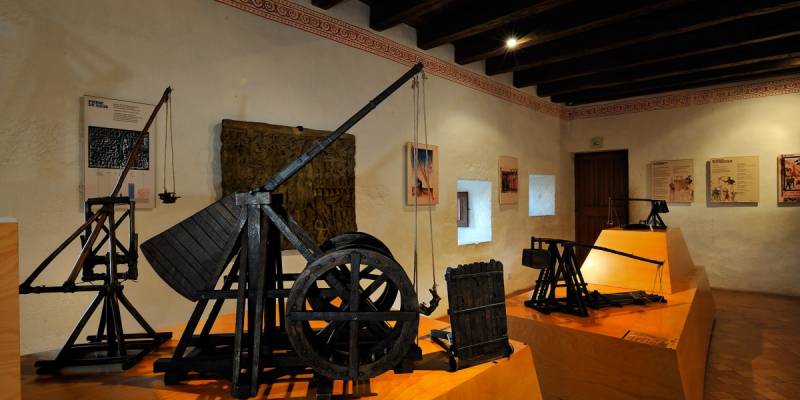
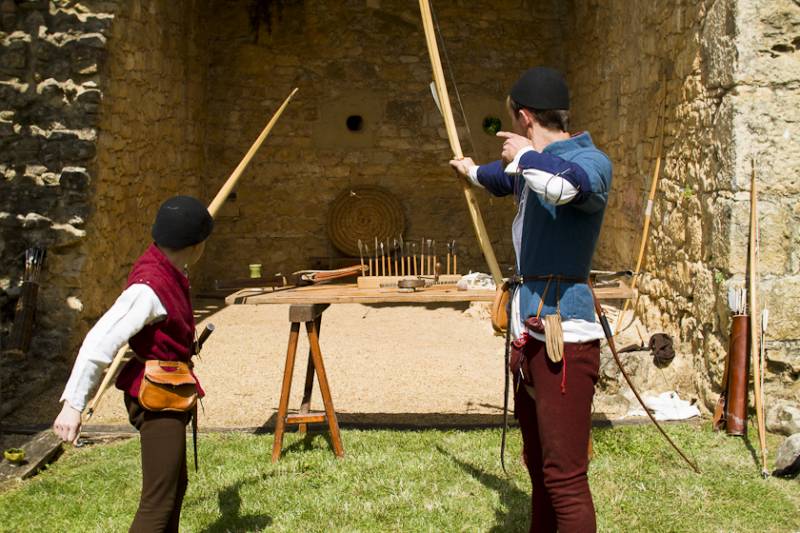
Information